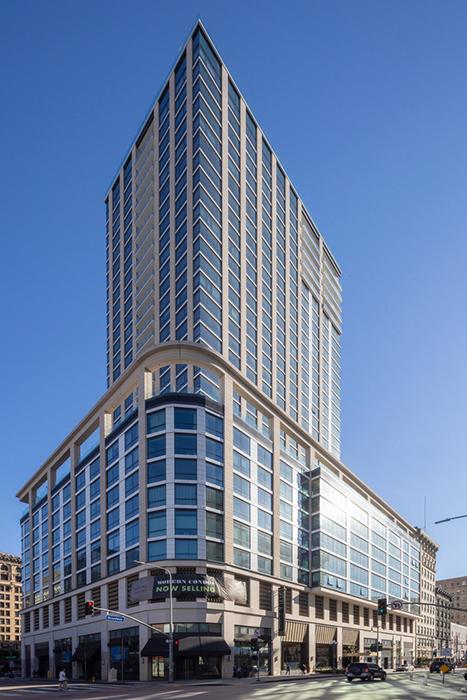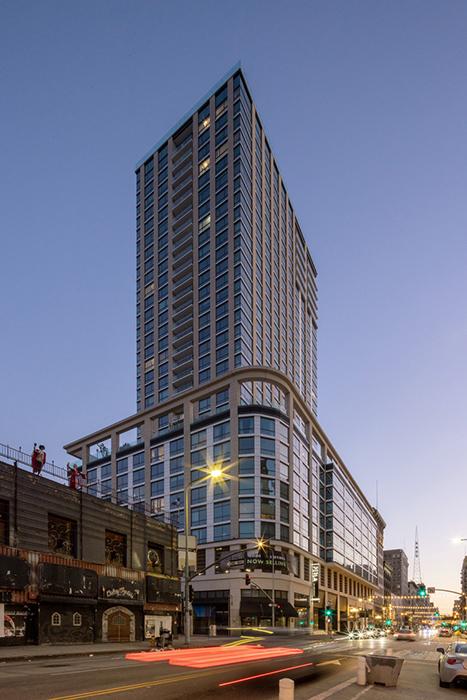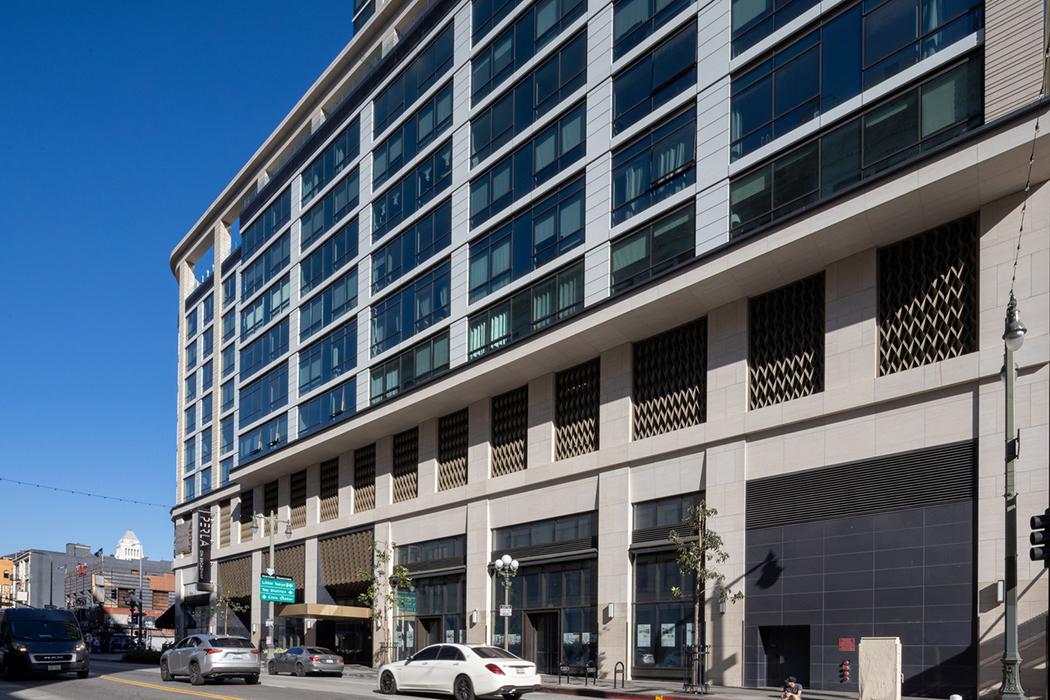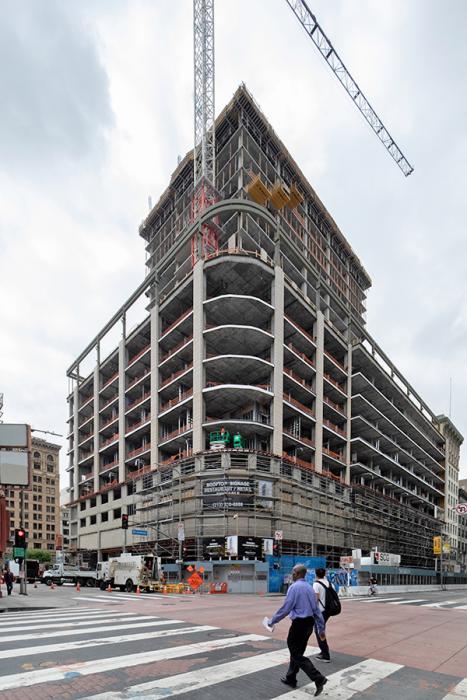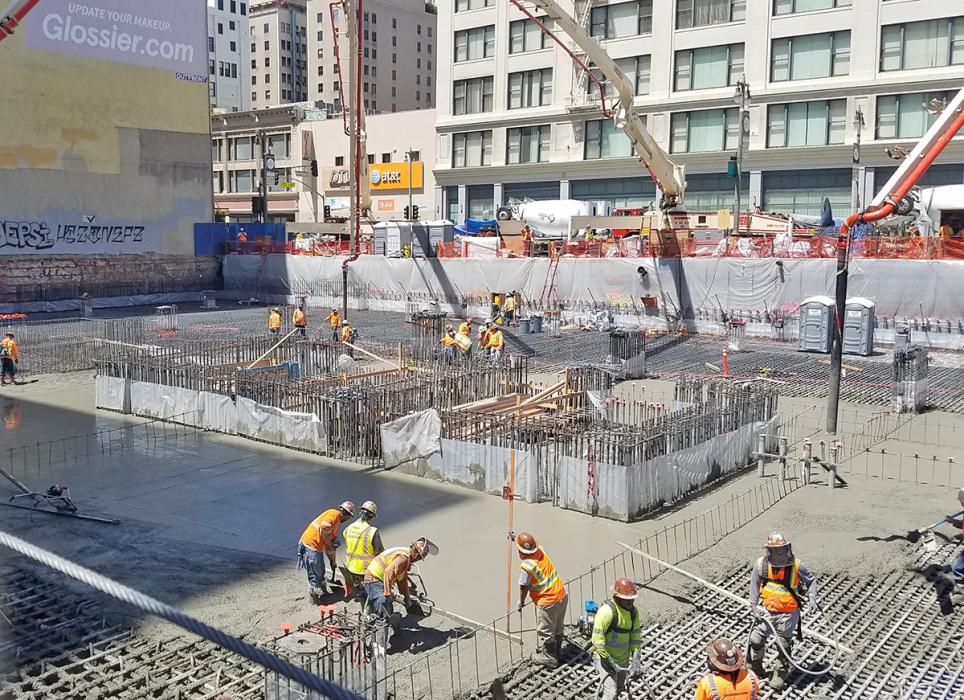Perla on Broadway
The 35-story, mixed-use condominium tower is part of an effort to revitalize the historic Los Angeles’ Broadway Theater District.
Overview
Located in Los Angeles’ Broadway Theater District, which is listed in the National Register of Historic Places and features the largest concentration of historic theaters on a single street in the U.S., this 35-story, mixed-use condominium tower is part of an effort to revitalize the historic downtown area. The 740,000-square-foot tower houses 450 condominiums with street level retail and amenities include outdoor space and a 11th floor wrap-around terrace featuring a pool, lounge areas and green space.
We provided structural design and seismic performance-based design services to CallisonRTKL for the tower, the first new residential high rise to be constructed in the neighborhood in more than a century.
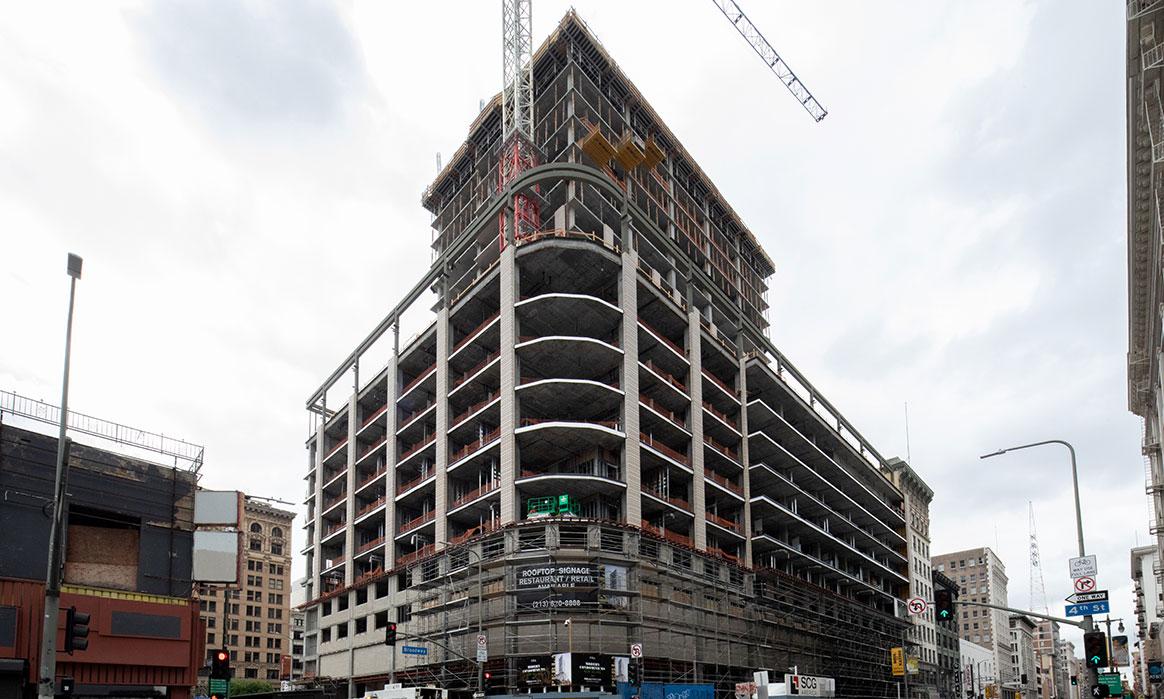
Highlights
- At the base of the tower, a 10-story podium holds six levels of above- and below-grade parking for up to 450 vehicles and 503 bikes, and an additional 7,000 square feet is reserved for retail and commercial space.
- Because of the surrounding area’s historical significance, the project had strict requirements for building materials and massing, including limitations on floor area as well as the tower and podium’s heights and setbacks.
- By using performance-based design as an approach, the project team was able to adhere to the architect’s vision, avoiding obstructive beams while still keeping site-specific seismic conditions in mind. This approach required detailed modeling of the structural frame, which resulted in a comprehensive understanding of the structure’s behavior and reduced construction time and cost.



